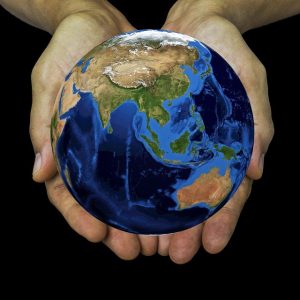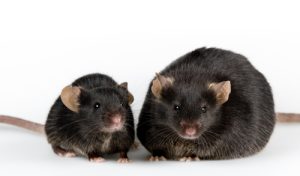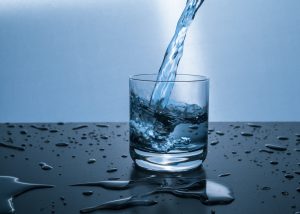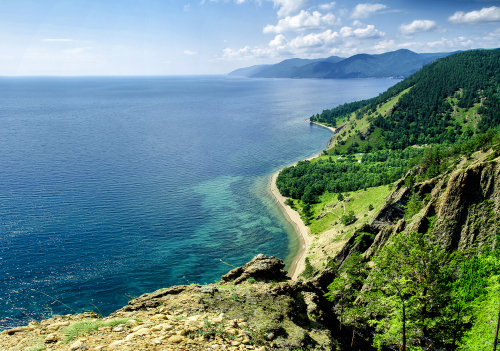
Many of us know that more than 70% of the Earth’s surface is covered in water. However, did you also know that some 96% of that water is to found in one of the earth’s five oceans? Running from largest to smallest, we know them to be the Pacific Ocean, Atlantic Ocean, Indian Ocean, Southern Ocean and the Arctic Ocean. However, can you name the world’s five largest inland bodies of water, just as easily? If not, here’s a quick run down on the world’s five largest inland bodies of water by surface area:
1. Caspian Sea
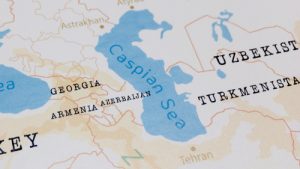
Photo credit: hyotographics/Shutterstock.com
The Caspian Sea is a relatively shallow salt lake that covers an area of some 371,000 sq. km (143,000 sq. mi). This makes it by far the world’s largest inland body of water. The sea has a maximum depth of 1025 m, an average depth of 211 m, and total volume of 78,200 cu km. It is bordered by Russia, Kazakhstan, Turkmenistan, Azerbaijan, and Iran.
The Caspian Sea is chiefly fed by the River Volga but there is no outlet. The sea has been an important source of fishing and primary trade route for hundreds of years. The main ports on the shores of the Caspian are Baku and Astrakhan.
2. Lake Superior
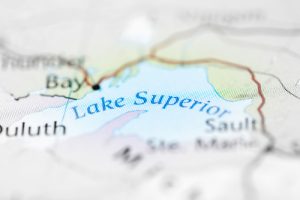
Photo credit: SevenMaps/Shutterstock.com
Lake Superior is the largest of North America’s Great Lakes and the world’s second biggest inland body of water. It is also the largest freshwater body of water in the world.. The lake has a surface area of approximately 82,100 sq. km (31,700 sq. mi) and has a maximum depth of around 406 m (1332 ft). The approximate longitudinal centre of the lake forms part of the border between the USA and Canada.
The lake waters are fed by more than 200 rivers. As part of the Great Lakes-St Lawrence Seaway system, Lake Superior drains into Lake Huron, via St Mary’s River. Thunder Bay and Ontario in Canada, and Duluth and Minnesota in the USA, are the largest cities that sit along the shores of Lake Superior.
3. Lake Victoria
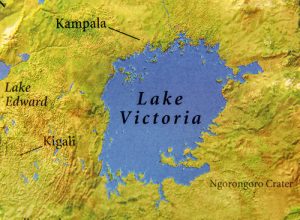
Photo credit: Bennian/Shutterstock.com
Lake Victoria, also known as Victoria Nyanza, is the largest lake in Africa and the world’s third largest body of inland water. At an area of approximately 69,500 sq. km (26,835 sq. mi) it is the world’s second largest body of freshwater. The lake lies mostly in Tanzania and Uganda but also borders on Kenya.
The Kagera and Katonga rivers are the main tributaries to Lake Victoria. The Lake’s only outlet is the River Nile, which empties to the sea on the north coast of Africa, after flowing some 6.650 km. There are a number of major settlements that lie on or close to the shores of Lake Victoria. These are the Ugandan cities of Kampala and Entebbe to the north, Kisumu in Kenya to the east, and Mwanza in Tanzania to the south.
4. Lake Huron
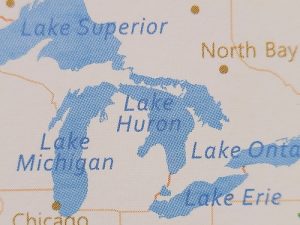
Photo credit: hyotographics/Shutterstock.com
Huron is the second largest of North America’s Great Lakes and the world’s fourth biggest inland body of water. The lake covers around 59,600 sq. km (23,010sq mi) and has a maximum depth of 230m (750 ft). The approximate longitudinal centre of the lake forms part of the the border between the USA and Canada.
As part of the Great Lakes-St Lawrence Seaway system, Lake Superior feeds Lake Huron, which in turn drains into Lake Erie. Amongst the largest settlements on the shores of Lake Huron are Sarnia and Saugeen Shores in Canada, and Bay City, Port Huron, and Alpena in the USA.
5. Lake Michigan
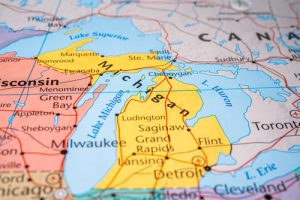
Photo credit: Alexander Lukatskiy/Shutterstock.com
Michigan is the third largest of North America’s Great Lakes and the world’s fifth biggest inland body of water. The lake covers around 57,800 sq. km (22,300 sq. mi) and has a maximum depth of 281 m (923 ft). Lake Michigan is the only one of the five Great Lakes that lies entirely within the United States.
Lake Michigan is connected by the Illinois Waterway to the Gulf of Mexico, via the Illinois and the Mississippi rivers. It is also connected to Lake Huron by the Straits of Mackinac. More than 12 million people live along the shores Lake Michigan, the majority in the metropolitan areas of Chicago and Milwaukee.
Header photo credit: Julia Agin/Shutterstock.com



